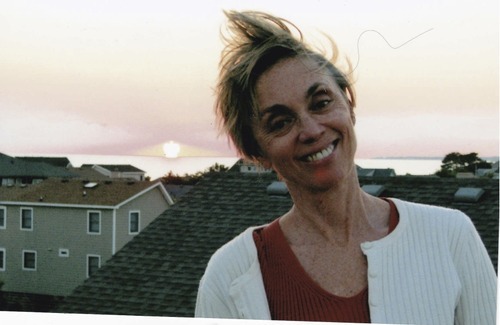
For many of us, writing is a journey of self-discovery, full of delights and surprises. I never set out to write a memoir. I had no plan or outline, no clear beginning and an unknown conclusion. It just became one along the way.
Seven years ago, I had just discovered that my daughter was a heroin addict. So in my grief and frustration I found relief by writing about it. And then I stopped. I moved to New Mexico where I met a writer who would become my teacher and coach. Looking over what I had started writing she encouraged me to turn it into something. So I did: I gave her a 500+ page rant, something Chris Offut would call “the delirium of the first draft!” Well, I thought I was done. I was thinking of section titles and started writing notes to myself in the margins: things like “Oh, by the way, I had a miserable childhood;” and “Hush, hush, don’t tell anyone, but I’m an addict, too.” And I realized in confronting these truths about myself that this was my story. Angie and her drug addiction was the catalyst, certainly, that got me writing. But the story began with me.
So I went back and wrote an introduction, a window into my childhood and young adulthood as Angie’s mother. I wanted you, the reader, to know me. And I felt it was important for you to know my daughter as well. She was a beautiful, gifted, full-of-promise child and young woman—before this cruel disease corrupted her.
The rest of the book started out as the roller coaster ride of drug addiction—thirteen years, from 2001 until now—all the highs and the lows, the rehabs and the relapses, the joys and the sorrows, everything that accompanies unbridled drug addiction. That was the original plotline. But I added another one along the way: that of my evolving recovery from all this heartache. These two plotlines parallel each other, and they intersect a lot in the beginning of Angie’s illness. But at some point in the story they go in separate directions.
And it’s in sharing the change and transformation in me as a result of this most tragic event in any parent’s life that this angry narrative about drug addiction takes the shape of a memoir. I weave the voice of recovery into every chapter, from beginning to end, as I reflect back on events in my life—through a different lens.
At the beginning of Pentimento, Lillian Hellman’s wonderful collection of remembrances that she wrote back in 1973, she points out how artists sometimes paint over what they had painted before. They changed their minds; they “repented.” So too in literature, she adds, “the old conception, replaced by a later choice, is a way of seeing…and then seeing again.”